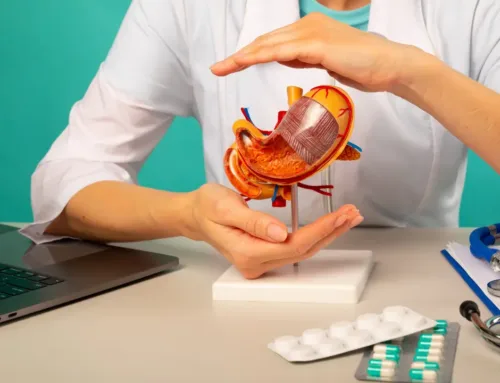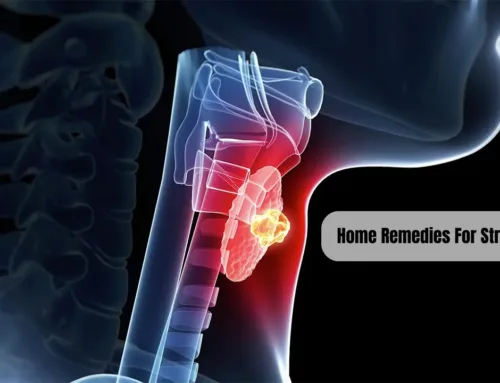A throat infection is one of the most common conditions that a physician encounters on an everyday basis. Strep throat is also a type of throat infection, which is fairly common and accounts for about 5.2 million outpatient visits each year. It most commonly affects children and adolescents, with a peak incidence in the winter and early spring.
Cause :
Strep throat is caused by an infection with a bacterium known as Streptococcus pyogenes. The genus Streptococcus has over 20 species, with complex further classification. Out of these several types, Streptococcus pyogenes, which is a group a beta hemolytic streptococcus, is particularly associated with disease in humans. It causes an array of diseases, including strep throat, skin or wound infections (impetigo and cellulitis), scarlet fever, pneumonia, muscle infection (necrotizing fasciitis), shock syndrome, kidney disease (post-streptococcal glomerulonephritis), and rheumatic fever.
Transmission:
Streptococcus pyogenes infection is highly contagious. It can spread directly via respiratory droplets during coughing or sneezing by the infected person, or by hand contact with respiratory droplets or any infected surface. In patients with a skin infection with Streptococcus pyogens, direct contact with the skin lesion can also be a source of infection transmission.
Symptoms:
Strep throat can cause:
- fever
- throat pain
- decreased appetite
- swelling and redness of the throat
- white patches inside the throat
- swelling of lymph nodes in the neck
- painful swallowing
Here it is worth mentioning that strep throat DOES NOT cause cough or flu (rhinitis).. If present, these symptoms suggest another aetiology, like viral pharyngitis, etc.
Complications:
Peritonsillar abscess: if not treated promptly, strep throat can result in throat abscess formation, which can cause significant morbidity and mortality.
Scarlet fever: sometimes patients infected with strep throat develop a generalised reddish rash over their whole body, which is known as scarlet fever.
streptococcal toxic shock syndrome: It is a deadly complication arising after a severe infection. It results in the patient becoming hemodynamically unstable and going in a state of shock secondarily to severe infection.
Rheumatic Fever: It is a delayed complication of infection with Streptococcus pyogenes, occurring about 2–3 weeks after a throat infection. It is a serious condition with various clinical manifestations like joint pains (arthritis), involvement of the heart (carditis), abnormal body movements (chorea), and skin changes (subcutaneous nodules and erythema marginatum).
Post-streptococcal glomerulonephritis: It is another delayed complication of strep throat, occurring about one to two weeks after the throat infection. It is basically a type of kidney injury that may present with increased blood pressure, blood in the urine,, body swelling, etc.
Diagnosis:
If a person presents signs and symptoms suggestive of strep throat, then the doctor may advise further tests to confirm the diagnosis. Currently, two tests are recommended for the diagnosis of strep throat. They are as follows:
Rapid antigen detection test (RADT) or the Rapid Strep Test:
It is a simple test done at the doctor’s clinic. It is not painful, but it may cause slight discomfort to the patient.
To do this test, your doctor will use a long cotton swab to take a sample from the back of your throat. Afterwards, that sample is tested for streptococcus pyogenes with the help of a kit. Results are usually available in about 5 minutes. This test is very specific for strep throat but not very sensitive, which means that it can miss some cases of strep throat. So keeping this in mind, if a rapid strep test comes out negative, then your doctor may advise another test called a throat culture.
Throat culture:
It is the gold standard for the diagnosis of strep throat. Samples for throat culture are taken in the same way as those for the rapid streptomycin test, that is, by using a long cotton swab, and then that sample is sent to the laboratory for further testing. It may take 24-48 hours to get results.
Treatment:
As strep throat is a bacterial infection, it is treated with the help of antibiotics. Antibiotics help relieve the symptoms of strep throat and prevent further complications. The first line of treatment is penicillin or amoxicillin, but if a patient is allergic to these drugs, then other drugs like azithromycin can also be used. Usually, a 10-day course of treatment with antibiotics is recommended. Following antibiotic treatment, patients may see the resolution of symptoms within one to three days and may return to work or school after 24 hours of treatment.
Prevention:
Although there is no vaccine or medicine that can be used prophylactically to prevent strep throat, there are a lot of simple ways in which strep throat can be prevented. Good hand hygiene is the most effective way to prevent strep throat. Regular hand washing with soap and water is highly recommended for both children and adults. Infected people should be encouraged to cover their faces, especially while coughing and sneezing. Avoid sharing personal items, like eating and drinking utensils, with sick people.
Why is my strep throat not going away?
There can be many reasons for a prolonged strep throat infection; maybe you are not taking appropriate treatment. Or maybe you are infected with a resistant type of bug that doesn’t respond to usual antibiotics and needs certain special antibiotics for eradication.
Can a strep throat cause a skin infection?
Yes, sometimes that happens. Basically, the bacteria causing strep throat can release certain toxins, which results in a generalised reddish rash; this condition is known as scarlet fever.
Can you get over strep throat without taking antibiotics?
Yes, strep throat may go away on its own. But antibiotics are highly recommended because they help relieve the symptoms faster, along with preventing transmission and further complications.
Can you get strep while on antibiotics?
Yes, it depends on the type of antibiotic you are taking. Each antibiotic has its own spectrum of microbes that it can kill or inactivate. If you are taking an antibiotic that is effective against Streptococcus pyogenes, only then are you protected from streptococcus.






Leave A Comment